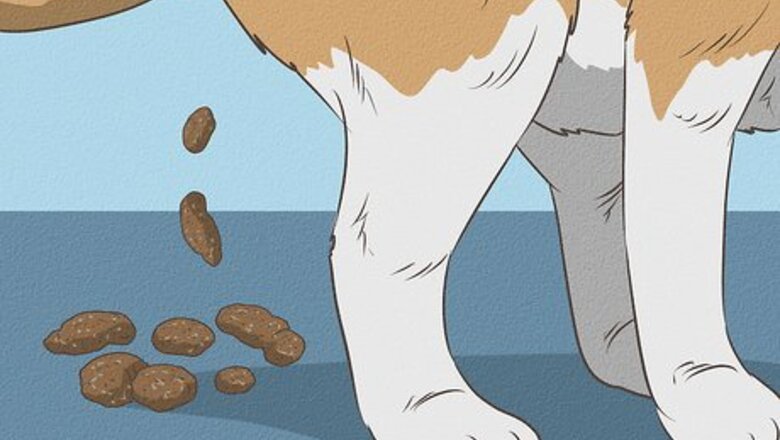
views
X
Research source
Constipation is a very common gastrointestinal (GI) problem in dogs and has many possible causes, such as medication, lack of exercise, and too little dietary fiber.[2]
X
Research source
Just like in people, constipation is very uncomfortable in dogs. If your dog is constipated, you can treat him using home remedies, but he may need veterinary care if his constipation becomes serious.
Treating Your Dog’s Constipation
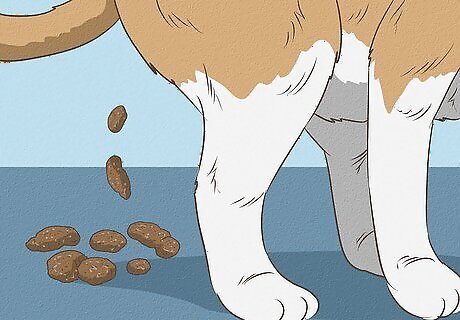
Determine if your dog is constipated. Common signs of constipation include staining to defecate and only small amounts of dry feces being passed after straining. You may also see matted feces around the anus, especially in longhaired dogs; feces can get stuck in the long hair when your dog defecates, which could prevent normal fecal passage. Although not as common, mucus can be seen with the feces when a dog is constipated. When your dog is straining, it is very possible that he is distressed and in pain. Keep in mind that signs of constipation can be confused with other diseases, such as urinary infections. Your veterinarian will be able to determine if the signs are due to constipation or another medical problem. If your dog has been constipated for several days, he may show signs such as loss of appetite, vomiting, and lethargy. You may even see blood around his anus. If he is this sick, take him to your veterinarian immediately for treatment.
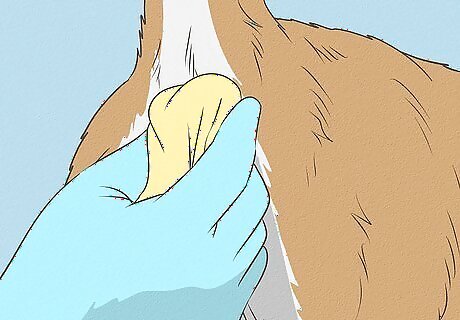
Clean your dog’s anal region. As unpleasant as this sounds, you will need to do this if you see matted feces or anything else (eg, grass particles) stuck in his fur around his anus. Before touching this area, put on a pair of latex gloves; if you are allergic to latex, you can wear nitrile gloves. If your dog has long hair, use a small pair of scissors to trim away the hair containing matted feces. Your dog may or may not like the feeling of the trimming process. If he doesn't like it, you can soak the hair in warm water first to make the hair easier to trim. Use warm & soapy water, along with a small towel, to clean the anal region. Because of the constant straining, this region will probably be very sensitive. Be very gentle when you are cleaning and talk to your dog in soothing tones to assure him that he will be okay. Your dog can be standing or lying down when you do the trimming; let him be in whichever position is comfortable for him. Applying KY jelly to the region after it’s clean will help to soothe the irritation. You can find KY jelly in your local pharmacy.
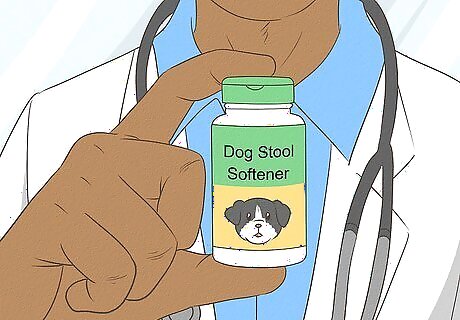
Treat the constipation. Unfortunately, once the constipation has developed, it can be tricky to clear and may require the use of an enema. Be aware that medicines given by mouth may take require days to travel from the top end of the digestive track down to the bottom end where they are needed. Thus, oral constipation products may not necessarily help once the problem has arisen, but are most effective for prevention. Your veterinarian may also recommend treatments that would require a prescription. If you are unsure about what to give your dog, call your veterinarian to see what they would recommend. Give your dog a stool softener or laxative. Human stool softeners and laxatives are too strong for your dog, so you will need your veterinarian to write a prescription for dog-appropriate stool softeners and laxatives. Mix mineral oil in with your dog’s food for up to one week. Mineral oil should never be given orally, since it could accidentally end up in your dog’s lungs and cause pneumonia. Using a measuring spoon, add 0.5 milliliters (mL) of mineral oil per 2 lbs of your dog’s body weight (1/8 teaspoon is about 0.5 ml). For example, if your dog weighs 40 lbs, then you would add 10 milliliters (0.34 fl oz) of mineral oil, which is a little less than 1 tablespoon. Add a small amount of unsweetened, canned pumpkin to your dog’s dry food. Depending on your dog’s weight, add 1 tablespoon (< 25 lbs), 2 tablespoons (25-50 lbs), or 3 tablespoons (> 50 lbs) to the food. Switch to canned food for a few days if your dog eats dry food. Canned food has more moisture in it, making it easier to pass through your dog’s digestive system. Canned food can cause diarrhea, so just a few days of canned food should be sufficient. Sprinkle a powder fiber supplement containing psyllium on your dog’s food every 12-24 hours (1/4 teaspoon for dogs <25 lbs, 1/2 teaspoon for dogs 25 to 50 lbs, and 1 teaspoon for dogs > 50 lbs). The additional fiber will help food material pass through your dog’s GI tract more easily. You can purchase this as an over-the-counter product at your local pharmacy. Provide your dog with plenty of fresh water as you increase the fiber content in his diet. If these home remedies have still not relieved your dog’s constipation after about a week, and he seems to be getting sicker, take him to your veterinarian for further workup and treatment.
Preventing and Managing Your Dog’s Constipation
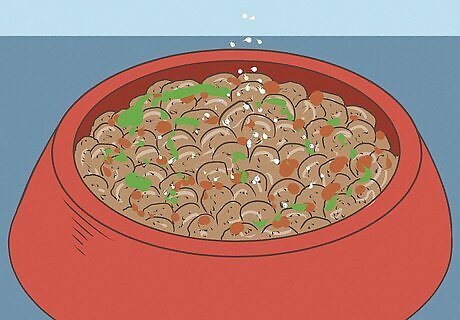
Add more fiber to your dog’s diet. Additional fiber is a prevention/management tool as well as a way to treat constipation. You can sprinkle psyllium-containing powder onto your dog’s food as you did to treat his constipation. You can also add fresh vegetables to your dog’s diet to increase his fiber intake. Examples of vegetables that you can add include carrots, peas, and green beans. Make sure that you provide your dog with plenty of water when you increase his fiber intake. With more fiber, your dog’s GI tract will produce more feces. If he does not drink enough water, the feces will not be able to pass through the anus, which could cause another bout of constipation. EXPERT TIP Ray Spragley, DVM Ray Spragley, DVM Veterinarian Dr. Ray Spragley is a Doctor of Veterinary Medicine and the Owner/Founder of Zen Dog Veterinary Care PLLC in New York. With experience in multiple institutions and private practices, Dr. Spragley’s specializations and interests include non-surgical management of cranial cruciate ligament tears, Intervertebral Disk Disease(IVDD), and pain management in osteoarthritis. Dr. Spragley holds a BS in Biology from SUNY Albany and has a Doctor of Veterinary Medicine degree (DVM) from Ross University School of Veterinary Medicine. He is also a Certified Canine Rehabilitation Therapist (CCRT) through the Canine Rehab Institute as well as a Certified Veterinary Acupuncturist (CVA) through Chi University. Ray Spragley, DVM Ray Spragley, DVM Veterinarian Prevent constipation in dogs. Constipation is very often caused by mild dehydration in dogs, so ensure unlimited access to fresh, clean drinking water. Also, gradually incorporate fiber-rich foods, maintain regular activity for bowel motility, and promptly consult your vet if constipation lasts over 6-12 hours.
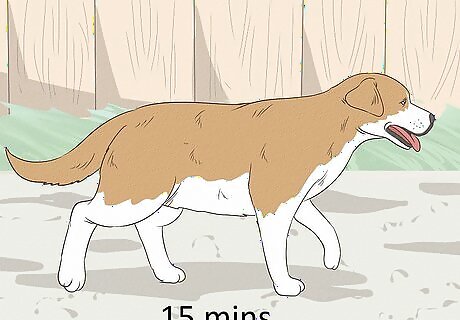
Increase your dog’s physical activity. Exercise can stimulate the motility of your dog’s GI tract, which will push food through more easily and prevent feces from getting stuck in the colon. The exercise does not have to be vigorous; 15-minute walks each day will help your dog get more exercise.
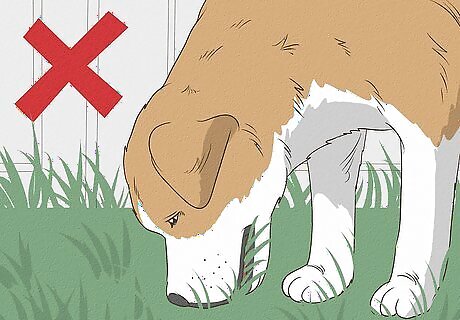
Lessen your dog’s grass-eating habit. Although your dog may eat grass on occasion, swallowing grass may give him constipation. Try to make sure that your dog does not eat grass while he is outside in the yard or out for a walk.
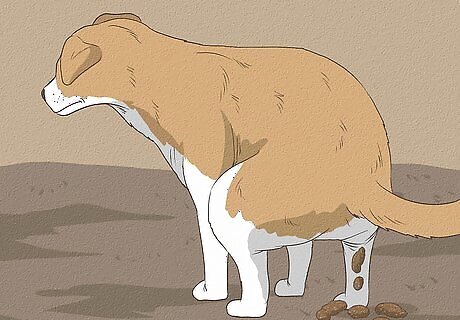
Give your dog frequent chances to defecate. If your dog indicates that he needs to go outside, let him out. If you make your dog hold it, so to speak, you may increase the chances that the feces will become stuck in his GI tract, increasing the likelihood of constipation.
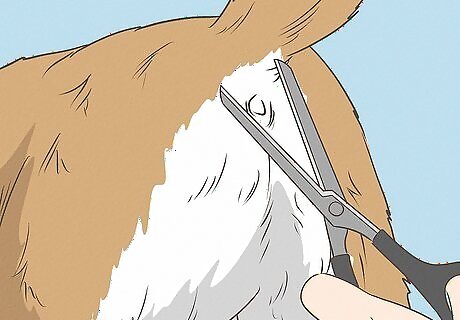
Groom your dog regularly. Longhaired dogs are more prone to constipation because of how easily feces can become matted in the long hair around the anus. If you are comfortable with trimming the hair, soaking it in warm water will help you trim the hair more easily. If you do not feel comfortable trimming the hair in your dog’s anal region, take him to get groomed on a regular basis. Dogs may also swallow their hair if they groom themselves, which could cause constipation. Regular grooming by you or a grooming service can decrease the chances that your dog will swallow his hair.
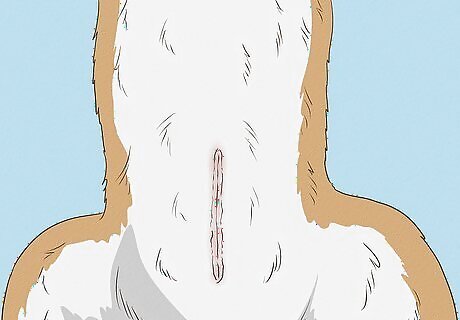
Get your dog neutered. As male dogs get older, their prostates may enlarge, which could make it more difficult for feces to pass through the GI tract. If your male dog is intact and your veterinarian has identified prostatic enlargement as the cause of your dog’s constipation, then having your dog neutered will help prevent further constipation. Enlarged prostates are just one example of medical problems, such as perineal hernias or anal sac disease, that can cause constipation. If your dog regularly has problems, always see your veterinarian so that any underlying health problems can be treated and corrected.




















Comments
0 comment